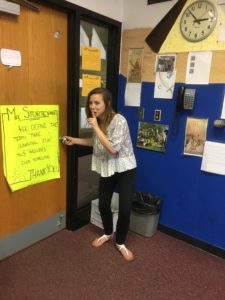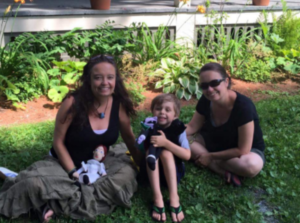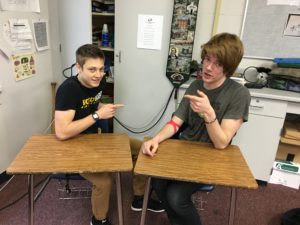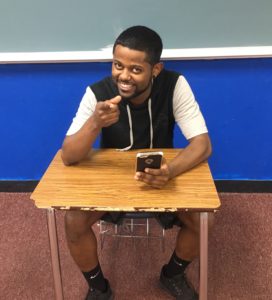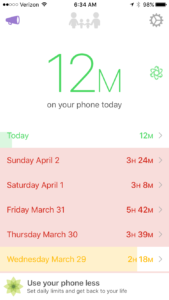Kristen Macklin and Jason Manly are Escape Room Architects. Kristen is a District Media Specialist and Jason a District Instructional Facilitator. When I asked Kristen where she got the idea for student escape rooms, she answered quickly, “Our principal went to one with his kids and loved it. Then, Spanish teacher Jennifer Zimmer appeared and asked for an assessment idea. I did a little research, found an article about educational escape rooms, and then approached Jason Manly with the concept.”
As I listened to Kristen, I recalled a Big Bang Theory episode. Amy, Emily, Leonard, and Raj visit an escape room. Being the brilliant characters they are, they burn through the clues quickly and escape. Nonetheless, the room itself was cool, the props were compelling, and the puzzles they solved would be quite challenging for the typical student.
Creating such a learning experience may seem like a tall order. Jason Manly suggests that intrigued teachers visit Breakoutedu.com for ideas, explanations, examples, and where you can also purchase equipment. Kristen has inventoried many props that make escape rooms possible. She and Jason utilize combination locks, QR-codes, jigsaw puzzles, hollowed out books, toolkits, tackle boxes, lock boxes, bicycle chains with locks, and their collection keeps expanding.
Jason suggests teachers place a lot of effort on creating engaging and challenging prompts. Then, architects like him and Kristen can build exciting escape rooms based on the teacher generated prompts. The student objective is simple. Small groups must solve a puzzle to get directions to the next. The ultimate objective is to be freed from the room. This occurs only after the mastery of many obstacles.
What you can do tomorrow:
- Research educational escape rooms. You’ll find plenty of examples and instructions with a basic Google search.
- Share a Google Form with colleagues. See if you can find some like-minded colleagues who’d like to explore this concept. Jennifer Zimmer would have been lost without the help of Kristen Macklin and Jason Manly. Finding like-minded colleagues could also help in terms of gathering props and the creation process.
- Approach administrators. Hopefully, they’ll be onboard with the idea. They may even be willing to pitch in some financial resources to prop acquisition. They also may have suggestions on where the escape room could be located. Perhaps, there’s an underutilized room in the building.
- Create engaging and challenging puzzles. This is entirely your job. In the Big Bang Theory episode, the characters solved the puzzles too quickly. It’s better to make them too challenging than too easy!
For your next assessment, challenge your students to escape. Ironically, they may not want to!
Listen to “57-Encourage Students to Sneak Out of your Room…Starring Kayla DeMuth” on Spreaker.
